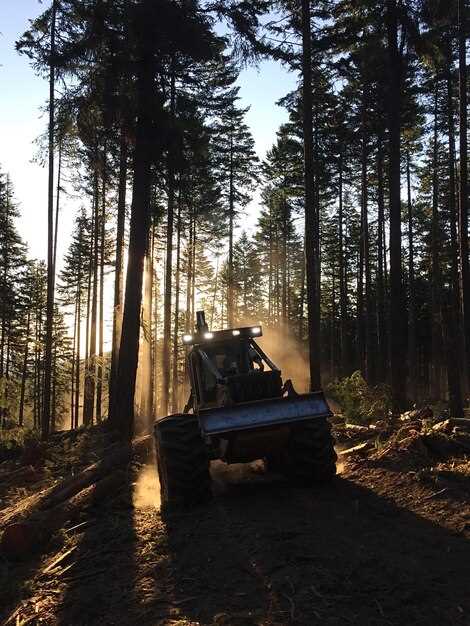How to build your first off-road Jeep


Embarking on the journey of building your first off-road Jeep can be an exhilarating experience. With countless customization options available, your vision can finally become a reality. This guide is designed to help both beginners and seasoned enthusiasts navigate the essential components needed to bring your off-road dream vehicle to life.
One of the most important aspects of building an off-road Jeep is selecting the right kit. The right kit not only enhances your vehicle’s performance but also ensures its durability on rugged terrains. From suspension lifts to armor plates, a quality kit will set the foundation for your off-roading adventures, allowing you to tackle obstacles with confidence and ease.
Equally crucial are the tires you choose for your Jeep. Off-road terrains demand specialized tires that provide traction and stability. Whether you’re navigating through mud, sand, or rocky paths, investing in high-performance tires will significantly affect your vehicle’s handling and safety. Understanding the types of tires available and selecting the best fit for your adventures is a critical step in your build process.
Choosing the Right Lift Kit for Your Jeep

Selecting the appropriate lift kit for your Jeep is crucial to enhance both its off-road capabilities and overall aesthetics. A well-chosen lift kit allows for larger tires, which improves traction and stability on rugged terrains. When considering a lift kit, several factors come into play.
Lift Height is the first consideration. Common lift heights range from 2 to 6 inches. A 2-3 inch lift is often suitable for mild off-road use and accommodates larger tires without extensive modifications. On the other hand, a lift of 4 inches or more is ideal for serious off-road enthusiasts looking to conquer more challenging obstacles.
The type of lift kit is also important. There are two main types: body lifts and suspension lifts. Body lifts raise the body of the Jeep away from the frame, providing clearance for bigger tires without altering suspension components. Suspension lifts, however, enhance the entire suspension system, improving articulation and ride quality, making them the preferred choice for a more significant off-road performance.
Another key aspect is the compatibility of the lift kit with your Jeep model. Not all kits are designed for every model year or series, so ensuring compatibility is essential for safety and effectiveness. Always refer to the manufacturer’s specifications or consult with a professional.
Tire Selection follows closely behind in importance. The lift kit you choose ultimately influences the tire size you can install. Larger tires provide better ground clearance and traction but can affect handling and fuel efficiency if not paired properly with the right lift. It’s advisable to select a tire size that complements your lift height to maintain optimal balance and control.
Lastly, consider the budget. Lift kits can vary significantly in price, often reflecting their quality and included components. Investing in a reputable brand with good reviews may save you money in the long run by avoiding potential issues and ensuring a better driving experience.
In conclusion, choosing the right lift kit involves assessing lift height, type, compatibility, tire size, and your budget. A well-chosen kit tailored to your needs will maximize your Jeep’s off-road capabilities and enhance its appearance.
Selecting Off-Road Tires for Maximum Performance

Choosing the right off-road tires is crucial for enhancing the performance of your Jeep. The right tires can significantly improve traction, stability, and overall driving experience on various terrains. Here are key factors to consider in your selection:
- Tread Pattern:
- Aggressive treads are ideal for rocky or muddy conditions as they provide better grip.
- All-terrain tires offer a balance between on-road comfort and off-road capability.
- Ensure the tread depth is adequate for the type of terrain you plan to tackle.
- Tire Size:
- Choose a size that fits your Jeep’s wheel wells without causing rubbing issues.
- Consider the impact of larger tires on your vehicle’s gearing and fuel efficiency.
- Sidewall Construction:
- Look for reinforced sidewalls to withstand sharp rocks and rough trails.
- Consider tires with a higher ply rating for added durability in extreme conditions.
- Tire Material:
- Select tires made from high-quality rubber compounds for better traction and wear resistance.
- Specific materials may enhance performance in varying weather conditions.
- Load Rating:
- Ensure the tires can support the weight of your fully equipped Jeep and any additional gear.
- Check load ratings to avoid premature tire failure during off-road use.
In addition to considering these factors, it’s also essential to pair your chosen tires with the appropriate off-road kit. Upgrading suspensions and other components may further enhance the performance of your new tires, allowing for a smoother, more controlled ride on rough terrains.
Finally, consult with professionals and fellow off-road enthusiasts to gather insights and recommendations tailored to your specific Jeep model and off-road aspirations. Investing time and research in selecting the right tires will play a pivotal role in maximizing your Jeep’s off-road performance.
Installation Tips for Lift Kits and Tires
When installing a lift kit, it is crucial to prepare your workspace and have all necessary tools on hand. Begin by reviewing the manufacturer’s instructions thoroughly. Each lift kit may have unique requirements or steps, so understanding these is essential for a successful installation.
Start with your vehicle on a flat surface, ensuring it’s secured with wheel chocks and jack stands. Make sure to disconnect the battery to prevent any electrical issues. Remove the factory tires before proceeding with the lift installation to gain better access to the suspension components.
As you install the lift kit components, consider using a torque wrench to tighten bolts to the manufacturer’s specifications. This ensures that connections are secure and helps prevent any damage or performance issues in the future. Pay special attention to alignment adjustments that may be needed after lifting your Jeep, as improper alignment can lead to uneven tire wear and handling issues.
When selecting tires, ensure they are compatible with your new lift. Consider factors such as tire size, width, and aspect ratio that match the lift kit installed. Larger tires can enhance off-road capability but might require modifications such as trimming the fenders or adjusting bump stops. Always check for clearance before finalizing your tire choice.
Before reinstalling the tires, it’s advisable to check the brake lines and compression on suspension components to ensure everything is within safe operational limits. Once the lift kit and tires are installed, take the Jeep for a short test drive to check for any noises or handling issues, and adjust accordingly.
Lastly, after installation, schedule a professional wheel alignment. This step is critical to ensure that your Jeep provides optimal performance both on and off the road. Regularly inspect your lift and tires for any signs of wear or damage after installation to maintain safety and reliability.
